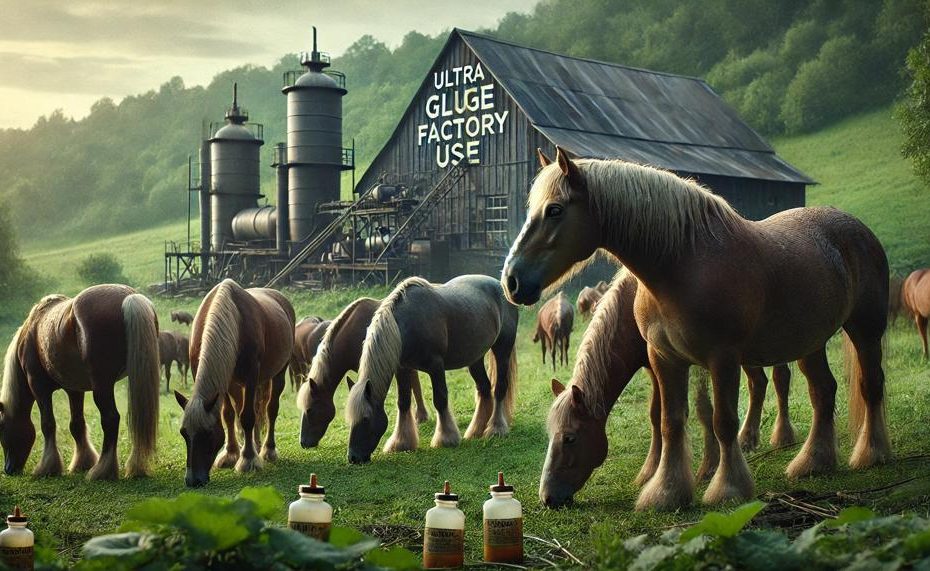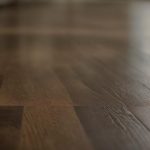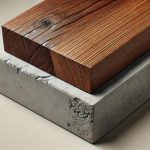No, horses are no longer widely used for making glue. Historically, horses played a significant role in glue production due to the high collagen content in their hooves, which created an effective adhesive. However, modern advancements have largely replaced animal-based glues with synthetic alternatives, which are more efficient and consistent. While animal glue is still produced, it primarily comes from cattle and not horses. The transition to synthetic glues marks a significant shift in industry practices, favoring materials that are both strong and non-toxic, meeting contemporary environmental and safety standards.
Key Takeaways:
- Historical Use: Horses were a primary source for glue due to collagen in their hooves.
- Modern Alternatives: Today’s glues are mostly synthetic, ensuring better performance and consistency.
- Animal Glue Today: Rarely involves horses, predominantly sourced from cattle.
- Environmental Impact: Synthetic glues offer non-toxic and biodegradable options.
- Industry Evolution: Significant shift from animal-based to synthetic glues for environmental and efficiency reasons.
This shift in glue production highlights both technological progress and a growing awareness of environmental and ethical considerations in manufacturing.
Table of Contents
What Is Horse Glue?
Horse glue, an ancient adhesive, is made by extracting collagen from the connective tissues, hooves, and bones of horses. This natural process involves several steps to ensure the highest quality of glue. Traditionally, horse glue has been utilised for various applications, thanks to its biodegradable and non-toxic properties.
How Horse Glue Is Made
Collection and Cleaning:
- The connective tissues, bones, and hooves of horses are collected.
- These materials are then thoroughly cleaned to remove any impurities.
Boiling:
- The cleaned materials are boiled in water to extract collagen.
- This boiling process breaks down the collagen into a gelatinous substance.
Filtering:
- The gelatinous mixture is filtered to remove any remaining solids.
- This ensures a pure and smooth adhesive base.
Concentration:
- The filtered mixture is further boiled to evaporate excess water.
- This concentrates the glue, increasing its adhesive properties.
Cooling and Solidifying:
- The concentrated glue is allowed to cool and solidify into a jelly-like substance.
- It can then be cut into pieces or dried for storage and later use.
Traditional Usage of Horse Glue
| Application | Description | Notes |
| Bookbinding | Used to bind pages and covers together. | Favoured for its flexibility and durability. |
| Woodworking | Commonly used in furniture making and repairs. | Provides a strong, yet reversible bond. |
| Leatherworking | Applied in the creation of leather goods. | Effective for adhering leather pieces without damaging them. |
| Art Conservation | Employed in the restoration of historical artifacts and artworks. | Chosen for its reversible nature, which allows for adjustments. |
Horse glue, with its natural adhesive properties, has played a significant role in various traditional crafts. Although modern synthetic glues have largely replaced it, horse glue remains a valued material in specialised fields such as art restoration and high-end woodworking.
Its unique characteristics, including being biodegradable and non-toxic, make it an interesting and eco-friendly option for specific applications.
Are Horses Killed to Make Horse glue?
No, horses are not killed specifically to make horse glue. Instead, horse glue is produced from the by-products of horses that have already reached the end of their natural lives or service.
Horse glue is made by utilizing the collagen found in connective tissues, hooves, and bones. This collagen is renowned for its strong adhesive properties and durability. The process involves boiling these materials to extract the collagen, followed by filtering and solidifying it into a usable form of glue.
This method not only creates a robust adhesive but also ensures that the by-products of horses are used sustainably, minimizing waste.

Here’s a detailed explanation of the process:
| Step | Description | Purpose |
| Collection of By-Products | Connective tissues, hooves, and bones are collected from horses that have naturally reached the end of their lives. | Utilizes parts that would otherwise be discarded, promoting sustainability. |
| Boiling | The collected materials are boiled to extract collagen. | Boiling breaks down the collagen into a liquid form. |
| Filtering | The boiled mixture is filtered to remove impurities. | Ensures the purity and quality of the collagen extract. |
| Solidifying | The filtered liquid collagen is allowed to cool and solidify. | Forms the final adhesive product. |
Horse glue has been used since ancient times for various applications such as bookbinding, woodworking, leatherworking, and art conservation due to its strong bonding capabilities and reversibility. This traditional method has been adapted with modern innovations, continuing its legacy while adhering to sustainable practices.
Horses Are Still at Risk in the United States
No, horses are no longer used for glue production in the United States. Modern adhesives have replaced the need for animal-based glues, with synthetic alternatives being more efficient and ethical. The transition to these newer materials ensures that horses are no longer exploited for their connective tissues and bones in glue manufacturing.
Why Horses Are No Longer Used for Glue Production
The shift from using horses to synthetic materials in glue production reflects advancements in technology and a growing ethical consciousness. Modern glues are derived from:
- Synthetic Polymers: These are man-made and designed to mimic the adhesive properties of natural glues without the need for animal products.
- Environmental and Ethical Concerns: Increased awareness and advocacy for animal rights have driven industries to adopt cruelty-free practices.
Modern Adhesives and Their Benefits
| Type of Adhesive | Source | Benefits |
| Synthetic Resin | Petrochemicals | Strong, versatile, and durable |
| Polyvinyl Acetate (PVA) | Ethylene and acetic acid | Non-toxic, quick-drying, and widely used in woodworking |
| Cyanoacrylate | Acrylic resin | Fast-setting, strong bond |
| Epoxy | Epoxide compounds | High strength, heat-resistant, used in heavy-duty applications |
What Is Horse Glue Used For?
Horse glue, also known as animal glue, is used in a variety of products due to its strong adhesive properties and versatility. Here are some common products that utilize horse glue:
| Product | Description | Usage |
| Musical Instruments | Violins, cellos, and pianos | Horse glue is used to bond wooden parts, ensuring a strong connection that can withstand string tension and intricate components. |
| Furniture | Traditional wooden furniture and antique restoration | Ideal for bonding joints and wooden pieces, horse glue can be dissolved for repairs, maintaining authenticity in antiques. |
| Bookbinding | Books and paper conservation | Used to bind book spines and restore old documents, providing durability and flexibility. |
| Paintbrushes | Artist and industrial paintbrushes | Horse glue binds the bristles to the handle, ensuring they stay in place during use. |
| Leather Goods | Bags, shoes, and accessories | Serves as an adhesive for assembling and repairing leather items. |
| Cosmetics | Hair and nail products | Used for its adhesive properties in certain beauty products. |
Horse glue remains a valuable component in these industries despite the rise of synthetic alternatives.
How Is Horse Glue Made?
The making of horse glue involves several meticulous steps, starting with the collection of horse hides. These hides undergo a series of treatments to extract collagen, the key protein responsible for the adhesive properties of horse glue.
Steps in Horse Glue Production:
Collection and Soaking:
Hides are soaked in water for several days to soften and cleanse them.
Fleshing:
Hair and remaining tissue are scraped off using a sharp knife.
Liming:
The hides are boiled in a large vat with lime, removing remaining hair and impurities.
Deliming:
Hides are boiled in a weaker lime solution to cleanse excess lime.
Degreasing:
Boiling in a water-animal fat solution removes remaining grease.
Conversion to Gelatin:
Prepared hides are dissolved in heated water to form a thick, gelatinous liquid.
This liquid is strained to remove impurities and cooled to form solid gelatin.
Differences Between Horse Glue and Other Glues:
| Aspect | Horse Glue | Synthetic Glues |
| Source | Animal hides (collagen) | Synthetic polymers (PVA, cyanoacrylate) |
| Strength | High tensile strength | Variable, generally high |
| Reusability | Reversible and reusable | Not reversible |
| Environmental Impact | Eco-friendly | Less eco-friendly |
| Applications | Woodworking, bookbinding, musical instruments | General industrial and commercial uses |
Are there Alternatives to Horse Glue?
Yes, there are several alternatives to horse glue. These include synthetic adhesives, plant-based glues, and animal-based glues from non-horse sources. Here’s how they compare in terms of effectiveness and sustainability:
| Type of Glue | Effectiveness | Sustainability |
| Synthetic Adhesives Examples: PVA, cyanoacrylate |
Highly effective and durable. Ideal for industrial use. Stronger than traditional horse glue. |
Not biodegradable. Production and disposal release harmful chemicals. High carbon footprint. |
| Plant-Based Glues Examples: Starch, cellulose glue |
Moderately effective. Suitable for light to medium applications. Not as strong as synthetic adhesives. |
Highly sustainable. Biodegradable and non-toxic. Environmentally friendly. |
| Animal-Based Glues (Non-Horse) Examples: Gelatin, casein, fish glue |
Effective for specific applications like woodworking and art. Less durable than synthetic adhesives. |
More sustainable than horse glue but still involve animal products. Renewable but raise ethical concerns. |
Conclusion
Horses have a long history in glue production due to the collagen found in their hooves and bones, which was once a primary source for making strong adhesives. However, technological advancements have revolutionized this industry. Today, synthetic alternatives dominate, offering more consistent and efficient results without relying on animal by-products. While animal glue is still produced, it’s mainly derived from cattle, not horses.
The transition from horse-based to synthetic glues reflects broader trends towards sustainability and ethical manufacturing practices. Synthetic adhesives, such as epoxy, PVA, and cyanoacrylate, provide robust, non-toxic, and often biodegradable options that align with modern environmental standards. This shift not only spares horses but also ensures safer and more reliable products for consumers.
Despite this progress, traditional animal glues, including those made from horses, remain in use for specialized applications like art restoration and high-end woodworking. These glues are valued for their unique properties, such as reversibility and natural biodegradability, making them ideal for conserving historical artifacts and crafting intricate wooden pieces.
In essence, the glue industry has evolved significantly, favoring synthetic solutions that meet contemporary demands for performance and ethical production.






